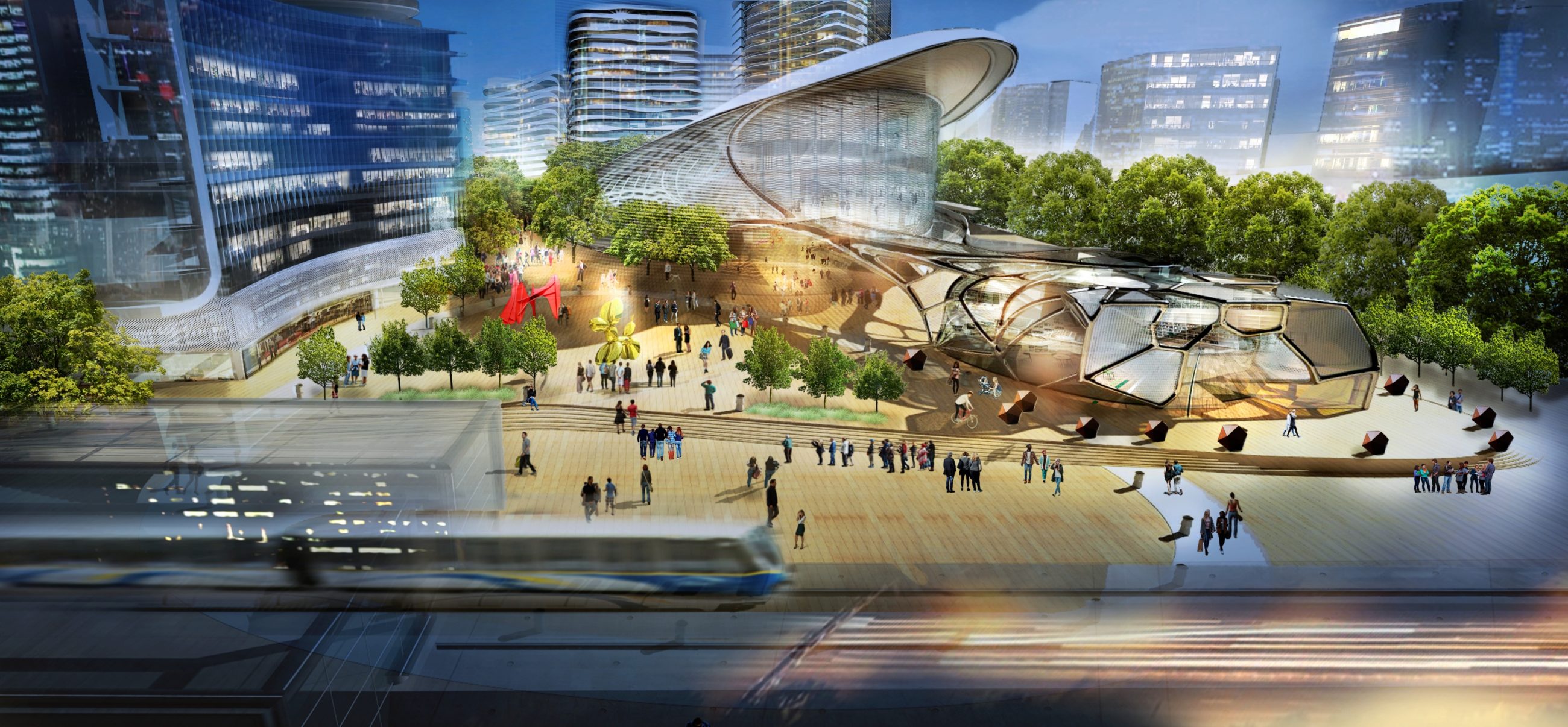
If you’re not a planner, architect, or developer, the term ‘transit-oriented development’ (or ‘TOD’) is probably one you’ve heard, but not one you’ve given much thought. As citizens, we often look at transit as a way to get from A to B, but TODs are so much more than that.
If we’re going to design better cities, we need to do a better job educating people on the tools to get there. With that in mind, here’s why we support transit-oriented developments:
- Transit-oriented developments create urban vibrancy through mixed-use – Transit-oriented developments are designed with a mix of residential, commercial, and retail; a one-stop hub for all your needs. They’re like mini villages with medium- to high-density housing plus groceries, retail, healthcare, entertainment, and quality transit.
- Transit-oriented developments are multi-modal – Transit-oriented developments are designed to accommodate a variety of transportation options like walking, cycling, public transit, and cars. But ultimately, transit-oriented developments are designed to make public transit the most favourable transportation option. People can give up their cars and choose alternatives that are faster, more affordable, and environmentally friendly.
- Transit-oriented developments are walkable communities – Transit-oriented developments are designed to be pedestrian-friendly with wider sidewalks, frequent crossings, and slower vehicle traffic. They help people feel safe walking to and from their activities. They’re designed with retail that spills out onto the sidewalks and quality transit within 400-800 metres. That means exiting the transit station, walking only a few minutes to the grocery store, a few minutes more to get home, and shopping and entertainment only a few steps from your front door.
The truth is, transit-oriented developments are about far more than developing around a transit station. The next time you hear the term ‘transit-oriented development’, think about these benefits and what a truly livable community means to you.